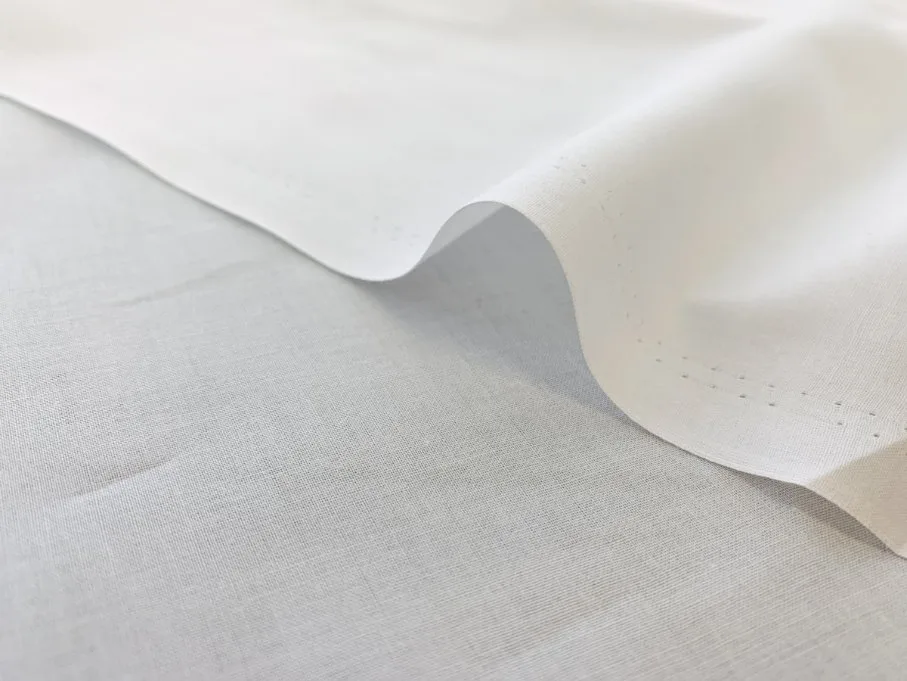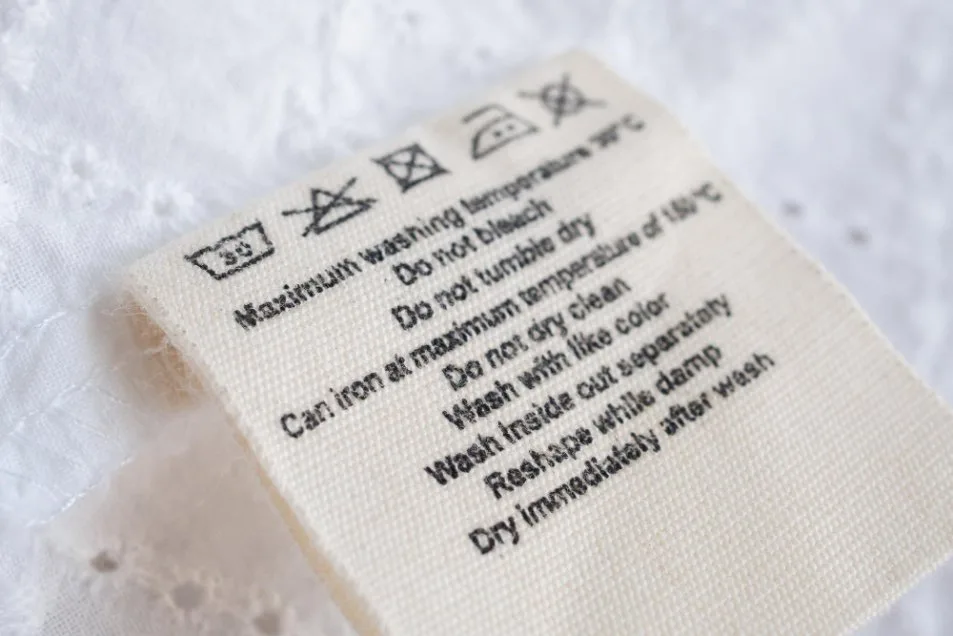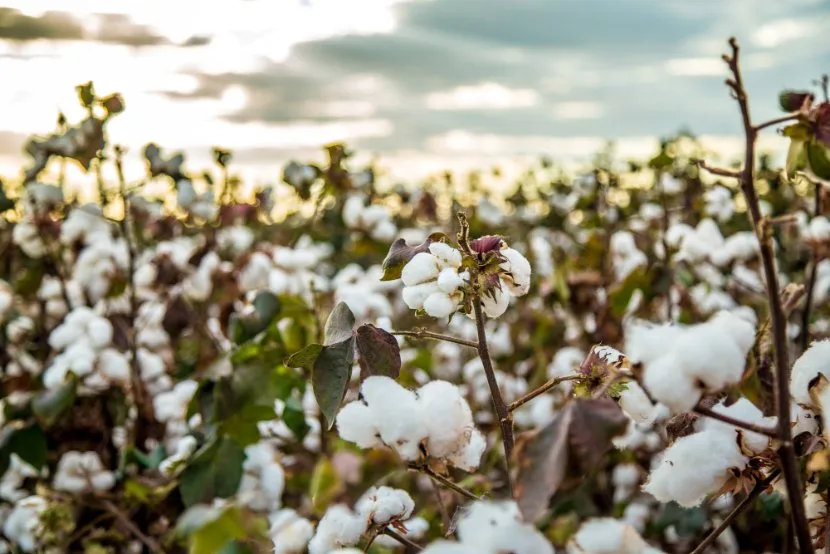Discover everything about batiste cotton from history to modern applications
Table of Contents
- What is Cotton Batiste Fabric?
- Historical Origins and Evolution
- Batiste vs Lawn vs Voile: Understanding the Differences
- Properties and Characteristics
- Modern Production and Sustainability
- Applications and Uses
- Sewing with Batiste: Expert Techniques
- Care and Maintenance Guide
- How to Identify Batiste Fabric
- Advantages and Disadvantages
- Common Problems and Solutions
- Frequently Asked Questions
What is Cotton Batiste Fabric?
Cotton batiste is a lightweight, semi-sheer fabric known for its soft texture and breathable properties. This plain-weave textile strikes a perfect balance between delicacy and durability, making it a favorite among designers and sewers worldwide.
Key Definition: Batiste (pronounced “bah-TEEST”) is a fine, lightweight cotton fabric with a plain weave structure. It typically features a thread count between 180-200 threads per inch and weighs approximately 3-4 ounces per yard.
The fabric gets its distinctive characteristics from several factors:
- Fiber quality: Made from high-quality, long-staple cotton fibers
- Weave structure: Simple plain weave creates durability while maintaining lightness
- Finishing: Often mercerized for added sheen and strength
- Thread count: Higher thread count than many lightweight fabrics
Historical Origins and Evolution
The story of batiste fabric begins in medieval Europe, though the exact origins remain debated among textile historians. The fabric’s name likely derives from the French city of Cambrai (historically known as Kameryk), where fine linen weaving flourished during the 13th century.
From Linen to Cotton: A Revolutionary Change
Originally, batiste was exclusively made from linen and served as a luxury textile for the European aristocracy. The transition to cotton began in the 17th century when British and Dutch merchants started importing cotton from India and the American colonies.
| Era | Material | Key Innovation | Primary Use |
|---|---|---|---|
| 13th-16th Century | Linen | Hand-spun threads | Religious vestments, luxury undergarments |
| 17th-18th Century | Linen/Cotton blend | Mechanical spinning | Handkerchiefs, christening gowns |
| 19th Century-Present | Cotton | Mercerization process | Fashion, bedding, home textiles |
The Mercerization Revolution
The modern cotton batiste we know today owes much to John Mercer’s 1850 discovery of mercerization. This chemical treatment using sodium hydroxide transforms cotton fibers, giving them:
- Increased strength and durability
- Enhanced dye absorption
- Lustrous, silk-like appearance
- Improved resistance to mildew
Batiste vs Lawn vs Voile: Understanding the Differences
Many people confuse batiste with other lightweight cotton fabrics. Here’s a comprehensive comparison to help you distinguish between these similar textiles:
| Fabric | Weight | Transparency | Hand Feel | Thread Count | Best Uses |
|---|---|---|---|---|---|
| Batiste | 3-4 oz/yard | Semi-sheer | Soft, smooth | 180-200 TPI | Lingerie, blouses, lining |
| Lawn | 3-5 oz/yard | Mostly opaque | Crisp, smooth | 140-180 TPI | Shirts, summer dresses |
| Voile | 2-3 oz/yard | More transparent | Crisp, structured | 100-140 TPI | Curtains, layered garments |
| Muslin | 4-6 oz/yard | Opaque | Soft, fuzzy texture | 65-75 TPI | Test garments, quilting |
Quick Identification Tip: Batiste feels softer and smoother than lawn but less sheer than voile. It has the finest texture of the lightweight cotton fabrics while maintaining good opacity for most colors.
Properties and Characteristics
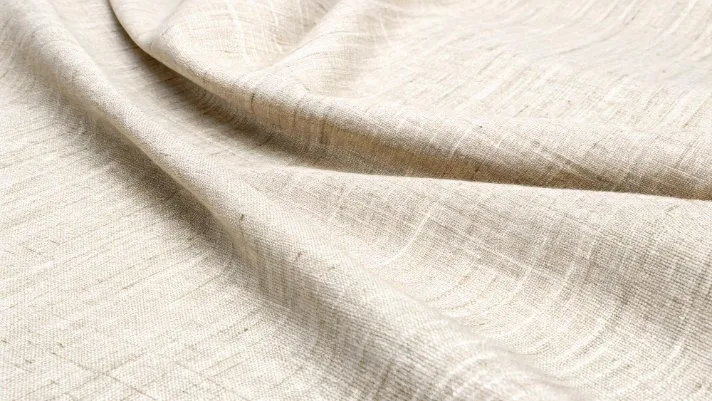
Physical Properties
Cotton batiste exhibits several distinctive characteristics that make it suitable for various applications:
Advantages
- Lightweight: Provides comfort without bulk
- Breathable: Open weave allows excellent airflow
- Soft texture: Gentle against sensitive skin
- Durable: Strong despite its delicate appearance
- Versatile: Suitable for multiple applications
- Takes dye well: Accepts colors beautifully
Disadvantages
- Wrinkles easily: Requires careful handling and storage
- May shrink: Needs pre-washing before sewing
- Shows construction: Seams visible due to transparency
- Frays readily: Cut edges need finishing
- Limited structure: Not suitable for tailored garments
- Can be delicate: Requires gentle care
What Does Batiste Fabric Feel Like?
Batiste has a distinctive tactile quality that experienced sewers can identify by touch alone. The fabric feels:
- Silky smooth: The surface has an almost liquid quality
- Lightweight: Seems to float in your hands
- Slightly crisp: Has body without stiffness
- Cool to touch: The breathable weave creates a cooling effect
Is Cotton Batiste Breathable?
Yes, cotton batiste is highly breathable due to its plain weave structure and natural cotton fibers. The open weave allows air circulation, making it ideal for warm weather clothing and undergarments. This breathability helps with moisture management and temperature regulation.
Modern Production and Sustainability

Eco-Friendly Production Methods
Contemporary batiste production increasingly emphasizes sustainability and environmental responsibility. Leading manufacturers now implement:
- Organic cotton sourcing: Pesticide-free cultivation methods
- Water-conscious dyeing: Closed-loop water systems reduce waste by 75%
- Low-impact dyes: Plant-based pigments replace harsh chemicals
- Local supply chains: Reduced transportation emissions
- Fair labor practices: Living wages for textile workers
Sustainability Stats: Modern eco-friendly batiste production uses 8-12 gallons of water per yard compared to 25-40 gallons for conventional methods. Learn more about sustainable cotton production practices.
Quality Certifications
When shopping for sustainable batiste, look for these certifications:
- GOTS (Global Organic Textile Standard): Ensures organic fiber content and environmental criteria
- OEKO-TEX Standard 100: Tests for harmful substances
- Cradle to Cradle: Evaluates material health and renewable energy use
Applications and Uses

Fashion and Apparel
Batiste excels in creating elegant, comfortable garments for various occasions:
Summer Clothing
- Blouses and tops: Lightweight layers for hot weather
- Flowing dresses: Romantic, feminine silhouettes
- Skirts: Adds movement without weight
- Children’s clothing: Gentle against delicate skin
Special Occasion Wear
- Christening gowns: Traditional choice for heirloom garments
- Wedding details: Sleeves, overlays, and trim work
- Historical costumes: Authentic period reproductions
Is Cotton Batiste Good for Lining?
Cotton batiste makes an excellent lining choice for several reasons:
- Smooth surface: Slides easily over skin and undergarments
- Breathable: Prevents overheating in lined garments
- Lightweight: Doesn’t add bulk to the finished garment
- Stable: Provides gentle support without restriction
Professional designers frequently choose batiste for lining expensive garments because it enhances comfort while maintaining the garment’s drape and silhouette.
Home Textiles and Decor
Beyond fashion, batiste serves numerous household applications:
Bedding and Linens
- Sheet sets: Cool, comfortable sleep surfaces
- Pillowcases: Gentle on hair and skin
- Duvet covers: Lightweight coverage for warm climates
Window Treatments
- Curtains: Filters light while maintaining privacy
- Valances: Delicate finishing touches
- Cafe curtains: Kitchen and bathroom applications
Sewing with Batiste: Expert Techniques
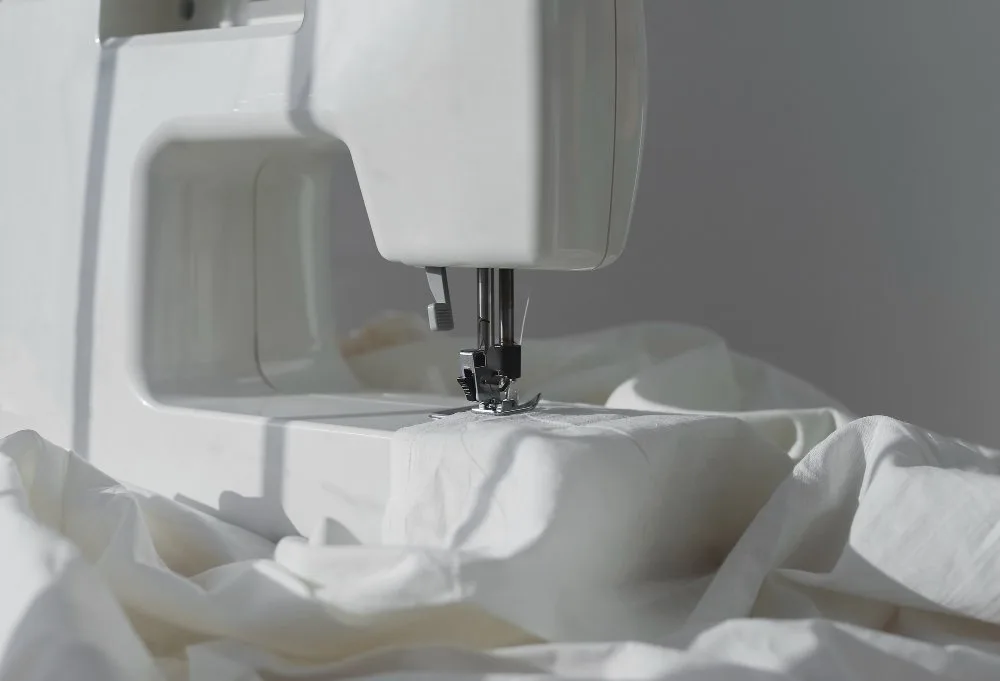
Working with batiste requires specific techniques to achieve professional results. Here’s your complete guide to sewing this delicate fabric successfully.
Essential Tools and Supplies
- Needles: Size 70/10 or 60/8 universal needles
- Thread: Fine cotton or cotton/poly blend thread
- Scissors: Sharp fabric scissors or rotary cutter
- Pins: Fine silk pins or clips
- Pressing: Steam iron with delicate setting
Step-by-Step Sewing Process
1. Preparation
- Pre-wash the fabric: Machine wash in warm water on gentle cycle
- Test for shrinkage: Measure a sample piece before and after washing
- Press carefully: Use moderate heat with steam
- Plan your layout: Consider fabric transparency in pattern placement
2. Cutting Techniques
Pro Tip: Cut batiste on a large, flat surface using weights instead of pins when possible. This prevents distortion of the delicate fabric.
- Use sharp tools to prevent fraying
- Cut single layers for accuracy
- Mark with washable fabric markers
- Add extra seam allowance for French seams
3. Seaming Options
Due to batiste’s semi-transparent nature, seam construction is visible from the right side. Choose appropriate seam finishes:
- French seams: Encase raw edges completely (recommended)
- Flat-fell seams: Strong, decorative option
- Serged seams: Quick finishing for less visible areas
- Hand-overcast seams: Traditional, time-intensive method
4. Pressing Guidelines
- Use cotton setting (300°F/150°C maximum)
- Press lightly to avoid flattening the weave
- Use pressing cloth for synthetic blends
- Steam carefully to prevent water spots
Interactive Sewing Resources:
Get personalized help for your batiste project with our Thread Selection Quiz to find the perfect thread, needle pairing, and expert tips tailored to your specific project needs.
Calculate exact fabric requirements with our Fabric Cutting Calculator to ensure you purchase the right amount of batiste for your sewing project.
Care and Maintenance Guide
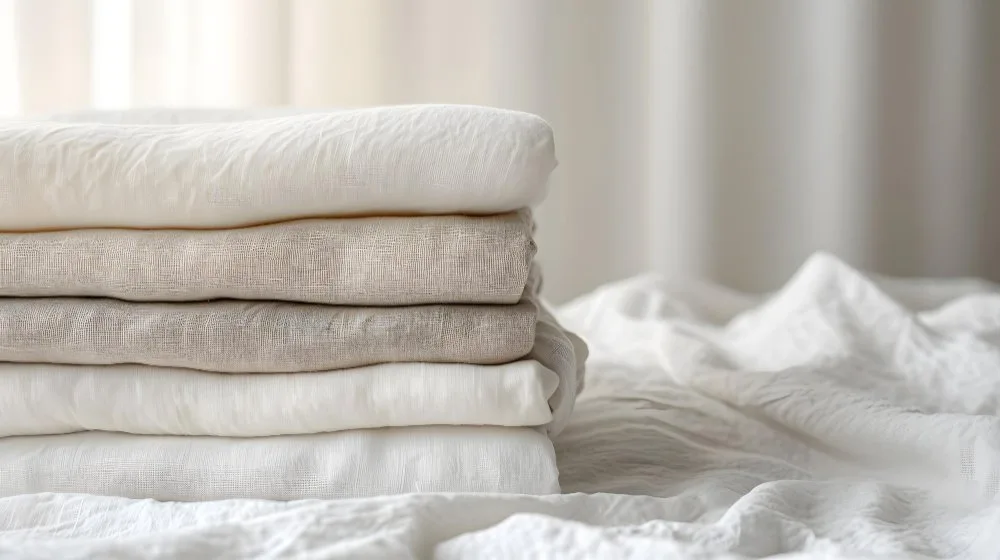
How to Care for Cotton Batiste
Proper care ensures your batiste items maintain their beauty and last for years. Follow these detailed guidelines:
Washing Instructions
| Care Aspect | Recommendation | Why It Matters |
|---|---|---|
| Water Temperature | Warm (140°F/60°C max) | Removes dirt without damaging fibers |
| Wash Cycle | Gentle or delicate | Reduces agitation and wear |
| Detergent | Mild, color-safe formula | Preserves fabric integrity and color |
| Load Size | Small to medium | Prevents tangling and tearing |
Drying Guidelines
- Best method: Air dry by laying flat on clean towels
- Machine drying: Use low heat and remove while slightly damp
- Avoid: Direct sunlight which can cause fading
- Wrinkle prevention: Remove promptly and smooth by hand
Does Cotton Batiste Wrinkle?
Yes, cotton batiste wrinkles easily due to its lightweight nature and natural cotton content. However, these wrinkles can be managed:
- Prevention: Hang garments immediately after wearing
- Storage: Use padded hangers for delicate items
- Travel: Roll instead of folding when packing
- Quick fix: Lightly steam or use wrinkle-release spray
Stain Removal
Emergency Stain Response:
- Blot (don’t rub) liquid stains immediately
- Rinse with cold water from the back of the fabric
- Apply gentle, color-safe stain remover
- Wash as soon as possible following care instructions
How to Identify Batiste Fabric
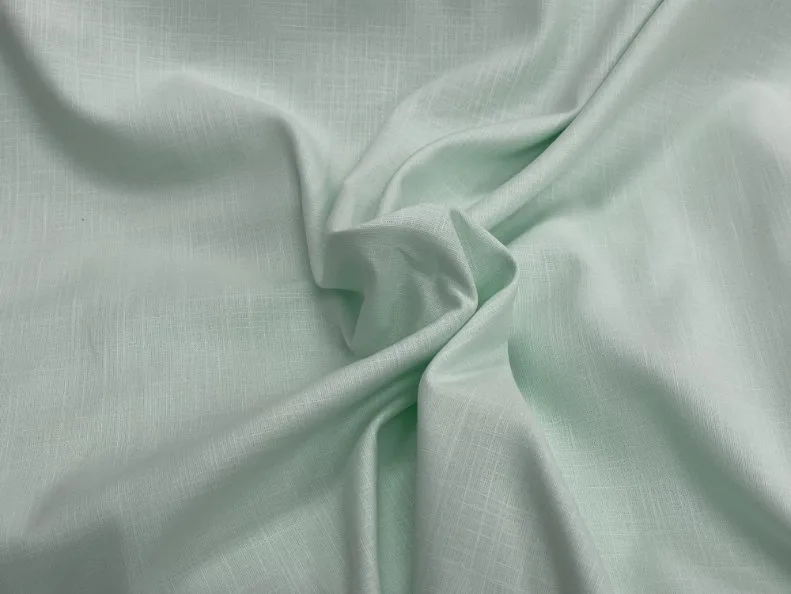
Learning to identify batiste fabric helps you make informed purchasing decisions and provides appropriate care. Use these identification methods:
Visual Identification
- Weave pattern: Simple over-under plain weave
- Transparency: Semi-sheer with some opacity
- Surface texture: Smooth, even appearance
- Drape: Flows softly with gentle structure
Touch Test
- Weight: Notably light but not flimsy
- Texture: Smooth surface with slight body
- Hand feel: Soft without being limp
- Recovery: Returns to shape when gently stretched
Fabric Content Verification
Check fabric labels for these indicators:
- Fiber content: 100% cotton or cotton blends
- Weight: 3-4 ounces per yard
- Thread count: 180-200 threads per inch
- Weave: Plain weave construction
Need Help Identifying Fabrics?
Try our Fabric Identification Quiz to test your knowledge and improve your fabric recognition skills.
Common Problems and Solutions
Sewing Issues
Problem: Fabric Puckering
Solutions:
- Use a smaller needle (size 60/8)
- Reduce thread tension
- Check that the presser foot pressure isn’t too heavy
- Use stabilizer behind seams if necessary
Problem: Fraying Edges
Solutions:
- Cut with very sharp scissors or rotary cutter
- Apply liquid seam sealant to cut edges
- Use pinking shears for temporary edge control
- Plan for French seams or other enclosed finishes
Problem: Visible Seams
Solutions:
- Use self-enclosed seams like French or flat-fell
- Match thread color exactly to fabric
- Consider decorative seaming as a design feature
- Add lining to hide construction details
Care and Maintenance Issues
Problem: Shrinkage After Washing
Prevention and Solutions:
- Always pre-wash fabric before cutting
- Use cool to warm water (never hot)
- Air dry when possible
- If shrinkage occurs, gently stretch while damp
Problem: Color Fading
Solutions:
- Wash in cold water with color-safe detergent
- Turn garments inside out before washing
- Avoid direct sunlight when drying
- Use color-catcher sheets in mixed loads
Comprehensive Advantages and Disadvantages
Why Choose Cotton Batiste?
Understanding both the benefits and limitations of batiste helps you make informed decisions for your projects:
Major Advantages
- Comfort: Exceptional softness and breathability make it ideal for garments worn close to the skin
- Versatility: Suitable for everything from baby clothes to elegant blouses
- Drape: Creates beautiful, flowing silhouettes without stiffness
- Workability: Easy to sew with proper techniques
- Color retention: Accepts dyes well for vibrant, lasting colors
- Hypoallergenic: Natural cotton is gentle on sensitive skin
- Breathability: Excellent air circulation prevents overheating
Key Disadvantages
- Wrinkle tendency: Requires more maintenance than synthetic alternatives
- Transparency: May require lining or careful layering
- Fraying: Raw edges need proper finishing
- Shrinkage potential: Must be pre-treated before sewing
- Delicate nature: Can snag or tear more easily than heavier fabrics
- Limited structure: Not suitable for tailored, structured garments
Frequently Asked Questions
How do you pronounce the name batiste?
Batiste is pronounced “bah-TEEST” with the emphasis on the second syllable. The word comes from French, where it’s pronounced similarly. Some English speakers may say “BAT-ist,” but the French pronunciation is more traditional.
What’s the best cotton for a shirt?
For shirts, cotton poplin or cotton lawn typically work better than batiste because they provide more structure. Batiste is better suited for flowing blouses, summer tops, or shirt linings where you want drape rather than crisp tailoring.
What is a batiste shirt?
A batiste shirt is typically a loose-fitting, flowing garment made from batiste fabric. These shirts are popular for summer wear because they’re lightweight and breathable. They often feature relaxed silhouettes rather than structured tailoring.
Is cambric cotton good for summer?
Yes, cambric cotton (which is closely related to batiste) is excellent for summer wear. Both fabrics share similar lightweight, breathable properties that help keep you cool in hot weather. Learn more about the best summer fabrics.
Does cambric cotton shrink after washing?
Yes, like most natural cotton fabrics, cambric and batiste can shrink 3-5% in the first wash. Always pre-wash your fabric before sewing to avoid disappointing results in finished garments.
What are the little balls on cotton fabric?
Those little balls are called “pills” and form when short fibers work loose and tangle together during wear and washing. Quality batiste made from long-staple cotton is less prone to pilling than lower-grade cotton fabrics.
Is there moisture wicking cotton?
While cotton naturally absorbs moisture, special treatments can enhance this property. Some batiste fabrics receive moisture-wicking finishes, though they’re not as effective as synthetic moisture-wicking materials used in athletic wear.
Is lawn better or cotton?
Cotton lawn is actually a type of cotton fabric, not an alternative to cotton. When comparing cotton lawn to other cotton fabrics like batiste, lawn typically offers more structure and less transparency, making it better for tailored garments.
What is the strongest cotton fabric?
Canvas cotton and cotton twill are among the strongest cotton fabrics due to their tight weave and heavy weight. Batiste, being lightweight, is not designed for strength but rather for comfort and drape.
What is another name for cotton lawn fabric?
Cotton lawn is sometimes called “lawn cotton” or simply “lawn.” In some regions, fine cotton lawn may be referred to as “cotton batiste,” though technically these are different fabrics with lawn being slightly crisper.
Does cotton lawn shrink when washed?
Yes, cotton lawn typically shrinks 3-5% during the first wash, similar to batiste. Always pre-wash cotton fabrics before cutting and sewing to ensure proper fit in finished garments.
Conclusion
Cotton batiste stands as one of the most versatile and beloved lightweight fabrics in the textile world. Its journey from medieval European luxury to modern everyday comfort demonstrates the enduring appeal of well-crafted textiles.
Key Takeaways
When to Choose Batiste
Select cotton batiste for projects requiring:
- Comfort and breathability: Summer clothing, undergarments, and baby clothes
- Elegant drape: Flowing dresses, blouses, and feminine silhouettes
- Lightweight lining: Adding comfort without bulk to structured garments
- Heirloom quality: Christening gowns and special occasion wear
Success Factors
To achieve the best results with batiste:
- Pre-wash everything: Prevent shrinkage surprises in finished garments
- Use proper techniques: French seams, fine needles, and gentle handling
- Plan for transparency: Consider lining or strategic pattern placement
- Care thoughtfully: Gentle washing and proper storage extend fabric life
Sustainable Choice
Choosing organic cotton batiste supports environmental responsibility while ensuring fabric quality. The investment in sustainable textiles pays dividends through:
- Reduced environmental impact
- Support for ethical manufacturing practices
- Superior fabric performance and longevity
- Health benefits from chemical-free textiles
Final Recommendations
Whether you’re a beginner sewer or experienced designer, cotton batiste offers endless creative possibilities. Start with simple projects like pillowcases or summer blouses to familiarize yourself with the fabric’s characteristics. As your confidence grows, explore more complex applications like heirloom sewing or home décor projects.
Remember that quality matters significantly with delicate fabrics like batiste. Invest in good-quality fabric from reputable suppliers, use proper tools and techniques, and take time with finishing details. The extra care invested in working with batiste rewards you with beautiful, comfortable, and long-lasting results.
For additional guidance and interactive tools to support your batiste projects, explore our comprehensive collection of fabric selection tools and project planning resources.

